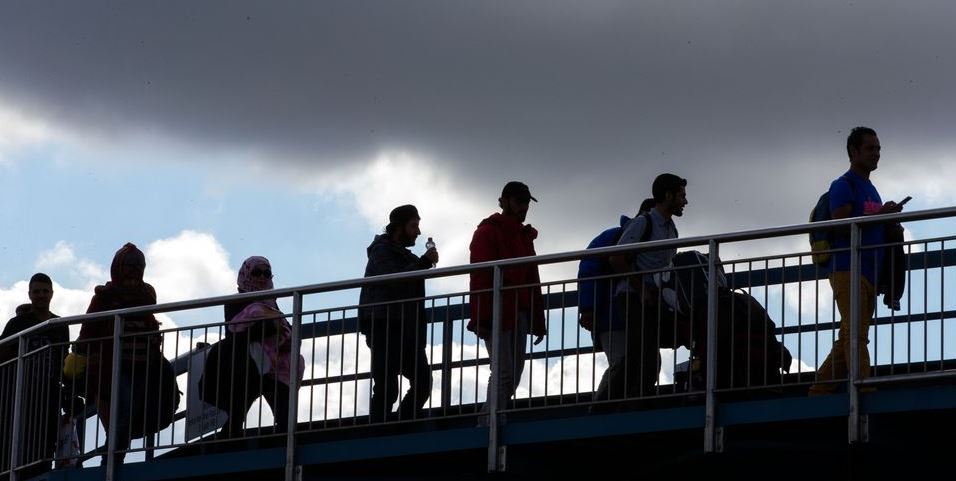The big question is, why in the world are we accepting them back at all?
They originally passed through those countries on their way to Finland. What these other EU countries should be doing is deporting them back to their country of origin, not back to Europe, let alone Finland. This is political/bureaucratic scumbaggery.
EU countries sending thousands of rejected asylum seekers back to Finland
The transfers are mostly asylum seekers who have moved on to try their luck in other EU countries after having their applications rejected by Finnish authorities.
In 2015, some 32,000 asylum seekers came to Finland, the majority of whose asylum applications were denied by Finnish authorities. However,not all of the rejected applicants returned to their home countries – they simply ventured to other parts of Europe.
As a result, Finland has seen an increase in the number of requests to return asylum seekers from other parts of the EU. In 2015 authorities were asked to take back 302 asylum seekers, and one year later in 2016, the number had skyrocketed to over 1,200. By the beginning of December this year, the number of confirmed transfer requests from other EU states was 2,287.
“The majority of them involve people who have received negative asylum decisions in Finland and have moved on afterwards,” said asylum seeker unit director Mikko Montin of the Finnish Immigration Service.
The majority of requests to return asylum seekers involve individuals from Iraq and Afghanistan. Some of them have appealed their decisions and had their appeals turned down by the Administrative Court. This means that they have been moving around Europe as undocumented migrants.
Transfer numbers may be exaggerated
However officials say the number of requests to transfer asylum seekers is not necessarily accurate, as it may contain duplications, especially in cases where individuals have applied for asylum in several different countries. Montin pointed out that Finnish officials may be alerted to the imminent return of a single individual many times.
According to EU practice under the Dublin Regulation, applications for asylum must be processed in the country in which they are first filed. This means that if an application is rejected in Finland and the individual travels to Germany, German officials will request permission from Finland to send the person back.
Montin told Yle that some asylum seekers may be aware of the system of so-called Dublin returns.
“Some probably know that they will not get asylum anywhere, but despite that they leave to try their luck in another country,” Montin explained.
The immigration official said that it’s not known whether such individuals decide to apply for asylum elsewhere when police notice that they have no residence permit.
Roughly half of the asylum seeker transfer requests come from Germany, but officials say they are hard pressed to explain why. Germany has a large population of migrants from the Middle East, but on the other hand, so does Sweden. They speculate that one reason could be rumours circulating among asylum seekers.
“During the autumn, there was talk going around in reception centres that Germany would grant residence permits. This partly explains why,” Montin hypothesised.
Majority of returnees accepted, outbound transfers in gridlock
Finland agrees to accept the vast majority of asylum seekers that EU states try to return. During this year and 2016, of a total of 1,727 transfer requests from Germany, Finland accepted 1,510.
While the number of transfers is rising, the pace at which Finland itself sends back asylum seekers from other countries is considerably slower. Although Finland received some 3,500 transfer requests during 2016 and this year, local officials returned just 783 asylum seekers to other states, mostly to Germany and Sweden.
Immigration authorities have just six months to return asylum seekers to the countries where they originally filed their asylum applications. After this period, responsibility for such individuals passes to the country in which they are located.
“If a person disappears or hides in some other country, they can never be returned,” Montin commented.
Transfers from Finland to other EU states are significantly lower than the number of asylum seeker returns that Finland accepts. This year Finnish authorities received 2,287 transfer requests but sent just 582 such requests to other EU countries.
According to the immigration service, there is a natural explanation for all this: Finland has not seen many asylum seekers arriving lately, so there are not many who would need to be sent back to another EU state.
Montin said that another possible explanation is that asylum seekers who have been turned down in other EU countries don’t want to stay in Finland but try to move on to other countries. He noted that travelling through the Nordics is more difficult than in other parts of the continent because of stricter border controls.
“Traffic doesn’t come this way. One factor is that Sweden and Denmark have internal border controls that specifically focus on this direction,” he added.
Applicants who’ve been denied asylum can move around from country to country for years, he noted.
“In theory. But at some point it will come to an end.”
EU leaders meeting at a summit Thursday evening will be trying to come up with solutions for the immigration issue. They will attempt to plan for the next time hundreds of thousands of migrants try to find asylum on the continent.

